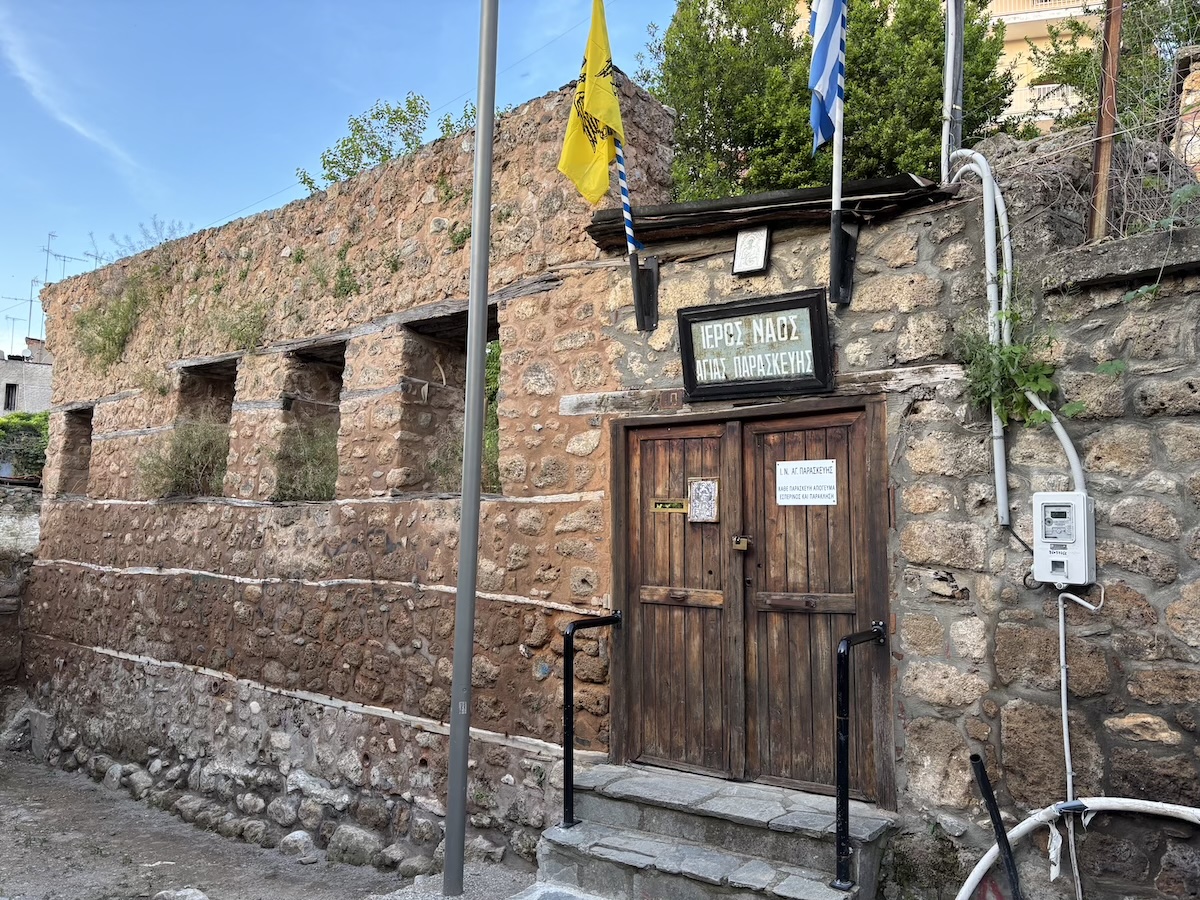Holy Church of Saint Paraskevi of Dexia: An 18th-Century Sanctuary in Veria, Greece
Holy Church of Saint Paraskevi of Dexia (18th c.), Dimosthenous, Veria, Greece

About
A Serene Retreat in Veria’s Sacred Landscape
Located at Dimosthenous 12 in Veria, Greece, the Holy Church of Saint Paraskevi of Dexia is an 18th-century Greek Orthodox church that exudes spiritual and historical allure. With a perfect 5.0 rating from 4 visitors, this church is a captivating gem among religious sites in Veria. Its later construction, serene ambiance, and cultural significance make it a must-see for those exploring Veria religious heritage.
The Historical Roots of Saint Paraskevi of Dexia
Built in the 18th century, the Holy Church of Saint Paraskevi of Dexia reflects Veria’s continued devotion during the Ottoman period, a time when the town, known as “Little Jerusalem,” maintained its Christian identity. Dedicated to Saint Paraskevi, a martyr revered for healing eye ailments, the church likely served as a place of pilgrimage and prayer. The “Dexia” designation, meaning “right,” may refer to its location or a specific tradition, though details are not specified in the CSV.
Managed by the Ephorate of Antiquities (contact: efahma@culture.gr), the church is a well-preserved relic of Veria’s post-Byzantine era. Its perfect 5.0 rating underscores its appeal, making it a key destination for religious tourism in Greece.
Architectural and Spiritual Highlights
The Holy Church of Saint Paraskevi of Dexia likely features 18th-century Orthodox architecture, with a modest stone facade and a design that blends Byzantine influences with local styles. Inside, visitors may encounter icons or frescoes of Saint Paraskevi, creating a sacred focal point, though the CSV does not confirm specific artworks. The church’s intimate interior, softly lit by natural light, fosters a sense of reverence.
The church’s dedication to healing aligns with Saint Paraskevi’s legacy, possibly drawing devotees for special prayers. Its 5.0 rating reflects its profound impact on visitors, ideal for those seeking a connection to Veria religious history.
Cultural Significance in Veria
As part of Veria’s rich tapestry of churches, Saint Paraskevi of Dexia reinforces the town’s “Little Jerusalem” identity. Its location at Dimosthenous 12 places it within Veria’s historic core, where cobblestone streets and traditional homes create a timeless atmosphere. The church likely hosts liturgies for Saint Paraskevi’s feast day on July 26, uniting the community in faith and celebration.
For travelers, the church offers a deep dive into Veria’s cultural and spiritual narrative, making it a highlight of religious tourism in Veria. Its connection to the Byzantine Museum of Veria (linked below) enhances its educational value.
Practical Tips for Visitors
To visit the Holy Church of Saint Paraskevi of Dexia, contact efahma@culture.gr or check the Byzantine Museum of Veria’s website for opening hours, as smaller churches may have limited access. Modest attire is recommended. The church’s central location is perfect for a walking tour of Veria’s historic sites.
After visiting, explore the Archaeological Museum of Veria, a short walk away, for insights into the region’s ancient past. For a local treat, enjoy soutzoukakia, savory meatballs, at a nearby taverna.
Links for Further Exploration
- Internal Link: Discover other Veria religious sites to complete your journey.
- External Link: Visit the Byzantine Museum of Veria for guided tours and historical insights.
The Holy Church of Saint Paraskevi of Dexia is an 18th-century sanctuary that captures Veria’s spiritual and cultural essence. Whether you seek history, faith, or tranquility, this church offers a memorable experience in Veria, Greece.
Religious Affiliation
Christian
Visitor Guidelines
Location
Information
Address
Holy Church of Saint Paraskevi of Dexia (18th c.), Dimosthenous, Veria, Greece